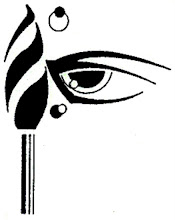Critical to the research, safeguarding, and display of museum objects and living collections, curators' roles have continued to expand in museum practice. Beyond collection work, today's curator engages the community by fostering civic, social, and cultural dialogue about ideas and creativity through public examination, interaction, research, interpretation, and exhibition of arts, sciences, and humanities collections.
Written by the members of AAM's former Curators Committee (CurCom), Curator Core Competencies is a comprehensive documentation of the domains curators work, their duties, and their applied skills to succeed in today's profession. It defines who curators are, what they do, and why they're essential.
PRELIMINARY CASE STUDIES/SITE VISITS 2023
National Museum of African American Music Nashville
National Museum of African American Music during your time in Nashville for a comprehensive look at the vast contributions that African Americans have made in American music. The exhibits feature the legacy and accomplishments of African Americans, using history and interactive technology to this new attraction in Music City.
Touring the NAAM while attending the AAAM National Conference in 2023 Nashville, TN.
Legacy Museum and Learning Center, Anaheim, California
Dr. Patricia Adelekan
Founder/CEO at Youth On The Move USA Inc
Legacy Museum and Learning Center in Anaheim, California, United States.
A Curator's Core Competencies
Introduction
The role of the museum curator is rewarding, broad, and challenging. This compilation of Curatorial core competencies created by CurCom's Standing Committee on Ethics addresses the skills required of curators to be successful in their profession. During the creation of this document, several sources provided valuable information regarding the skills identified by respective institutions as integral to the role of curators. The AAM, CurCom's Code of Ethics, US Federal Government's position classifications, US National Park Service classifications, College Art Association's standards and guidelines, International Committee for the Training of Personnel, and International Council of
Museums served as references, helping to create the foundation for this document. Most important were the informal conversations with curatorial colleagues and conference sessions since the 2012 AAM annual meeting, which provided valuable insights into the demands on museum curators today and revealed the growing need to formally study curatorial education, experience, and training, as well as to express the competencies required to practice the craft.
Sojourner Truth African Heritage Museum, Sacramento, CA
AFRICAN AMERICAN CULTURAL CENTER OF LONG BEACH
The mission of the African American Cultural Center of Long Beach is to preserve, honor, and celebrate the heritage and advance the culture of the Black/African American community in Long Beach and beyond.
The 2014 survey conducted by CurCom validated much of the input taken from these discussions and revealed other interesting considerations.
For all the things this document is, there are several things that it is not. The Core Competencies is not a manual on how to be a curator. Instead, this document intends to define the curatorial profession and identify the commonalities of curatorial domains where curators of all academic disciplines work. This document is also not intended to be a generic list of competencies for all museum professionals - it is for curators, aspiring curators, those who train curators, and those who are interested in
what a curator is.
Defining a Curator
According to the most recent version of CurCom's Curatorial Code of Ethics (CurCom, 2009), Curators are "highly knowledgeable, experienced, or educated in a discipline relevant to the museum's purpose or mission. Curatorial roles and responsibilities vary widely within the museum community and within the museum itself and may also be fulfilled by staff members with other titles."
The varied and unique roles curators perform and the domains in which curators work require the Curator's Core Competencies to go beyond this statement to state more definitively what curators are and what they do. Rather than defining curators by their function or role, which shackles them to ineffective categories, the Core Competencies defines curators by what they must know and within their work domains. Curators contribute meaningfully to philosophical issues that guide their institutions.
Like all competence, curatorial competence is rooted in a meaningful sum of knowledge, experience, and skill. To reduce it to skills or functions undermines the larger contribution for which curators are uniquely capable. This also informs how curators should be educated in order to advance the practice.
The Core Competencies goes beyond trying to resolve the tension between the academic and procedural functions, relying on the nuance of what competence is – knowledge, experience, and skill combined, to frame the understanding of curators. In addition to a statement about what CurCom defines a curator as, this document details the domains in which curators work, the types of competencies curators must have, and the applied skills and faculties required to carry out those responsibilities.


















